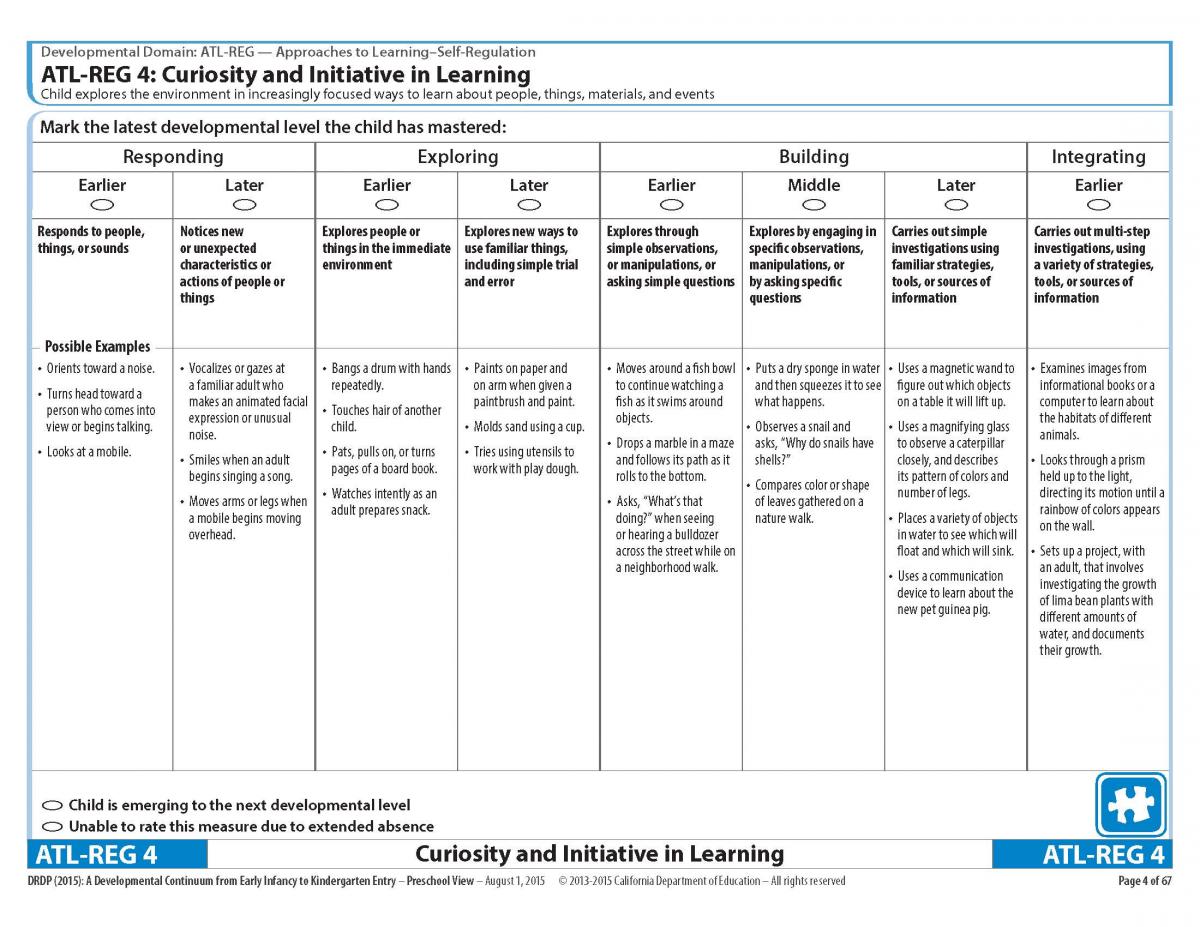Return to DRDP Measure Video Examples
Definition: Child explores the environment in increasingly focused ways to learn about people, things, materials, and events
View examples of the developmental levels for ATL-REG Measure 4 below: Responding Earlier, Responding Later, Exploring Earlier, Exploring Later, Building Earlier, Building Middle, Building Later, Integrating Earlier
Note: For young children, learning is an integrated experience. The examples below may include multiple areas of learning and development.
Responding EarlierResponds to people, things, or sounds Possible Examples
| |
Responding LaterNotices new or unexpected characteristics or actions of people or things Possible Examples
| Source: California Department of Education. 2009. California Infant/Toddler Learning and Development Foundations Series. California Early Learning Videos. |
Exploring EarlierExplores people or things in the immediate environment Possible Examples
| Source: California Department of Education. 2009. California Infant/Toddler Learning and Development Foundations Series. California Early Learning Videos. |
Exploring LaterExplores new ways to use familiar things, including simple trial and error Possible Examples
| |
Building EarlierExplores through simple observations, or manipulations, or asking simple questions Possible Examples
| Source: California Department of Education. 2015. California Preschool Learning and Development Foundations Series. California Early Learning Videos. |
Building MiddleExplores by engaging in specific observations, manipulations, or by asking specific questions Possible Examples
| Source: California Department of Social Services. 2015. |
Building LaterCarries out simple investigations using familiar strategies, tools, or sources of information Possible Examples
| Source: California Department of Services. 2015. |
Integrating EarlierCarries out multi-step investigations, using a variety of strategies, tools, or sources of information Possible Examples
| What would your example be? |
Return to DRDP Measure Video Examples
